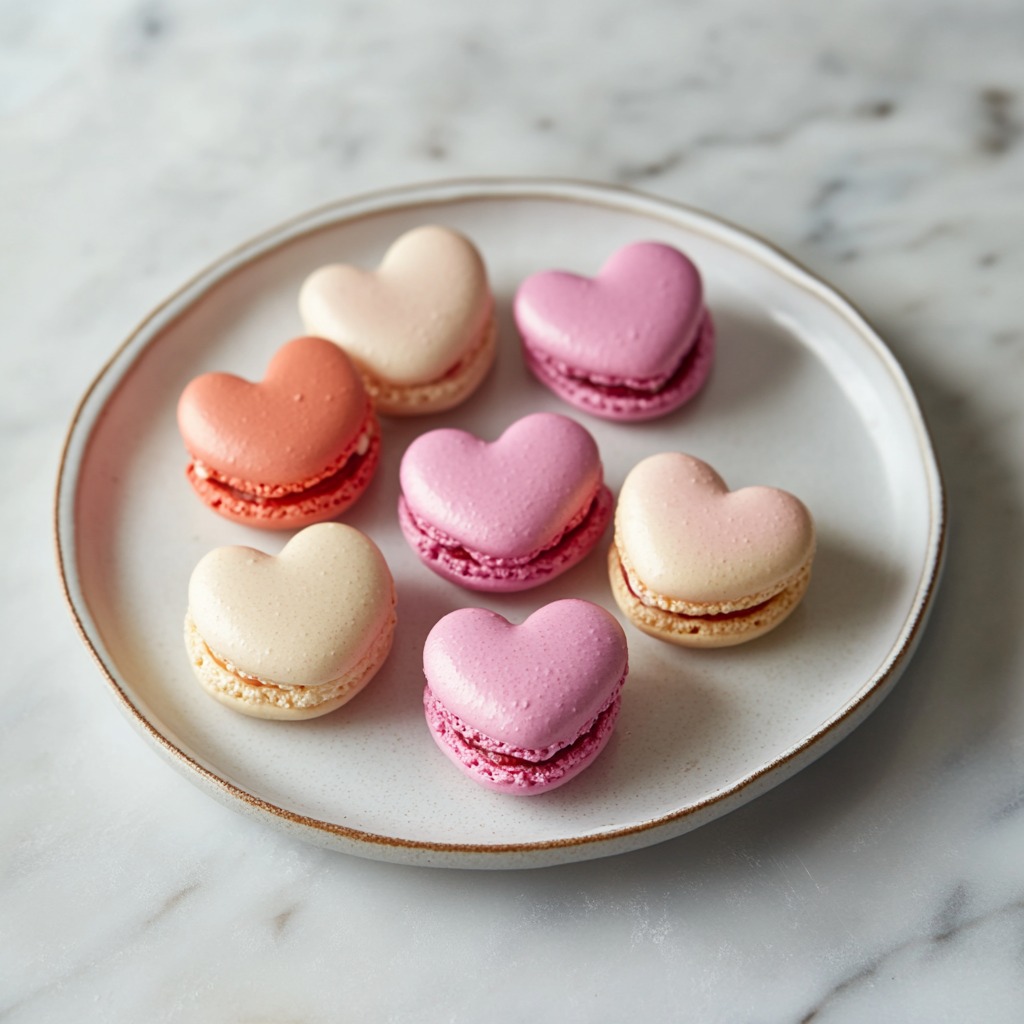 Save
Save
The velvety almond shell paired with its soft, sugary center makes the ideal macaron - and crafting them into hearts shows that extra bit of affection. These French treats need time and accuracy, but once you nail them, you'll feel so proud. After tweaking this method in my home, I can guarantee these heart-shaped goodies will turn into your go-to special event snack.
My first try at heart macarons turned out more like weird splodges than hearts! But I learned from a top French baker and found out how to nail the shapes. These days my grandkids beg for them whenever there's something to celebrate.
Vital Components Breakdown
- Powdered sugar (1 cup for shells, 1 cup for filling): needs sifting thoroughly to avoid any bumps in your shells
- Almond flour (½ cup): go for the skinless, extra-fine type for the best finish
- Egg whites (2 large): let them sit out for a day to work better
- Granulated sugar (¼ cup): makes your whipped egg whites stay firm
- Unsalted butter (½ cup): fancy European kinds make a tastier filling
- Pure vanilla extract (½ tsp shells, 1 tsp filling): don't cheap out with fake stuff
Crafting Gorgeous Heart Macarons
- Step 1: Setting Up Your Foundation
- Run your powdered sugar and almond flour through a sieve three times - you can't skip this! Every tiny bump will be visible later. Put down parchment paper and sketch heart shapes on the underside as your guide. Make sure your egg whites aren't cold and don't have any yolk bits in them.
- Step 2: Whipping Your Meringue
- Start beating those egg whites slowly until they foam up. Then pump up the speed to medium-high, adding your sugar bit by bit. Keep going until you see stiff, shiny peaks - when you pull out the beater, the tip should stand up with just a tiny curl.
- Step 3: The Crucial Folding Technique
- Mix in your dry stuff in three batches. With a big spatula, fold using a J-shape, going around the bowl's bottom and sides. You'll know it's ready when it flows like warm honey - lift some up and it should melt back into the mix within half a minute.
- Step 4: Making Those Hearts
- Load your piping bag with a round tip. Hold it straight up and down, squeeze a dot, pull down to make the point, then create two matching curves at the top. Ease off pressure gently and lift away without leaving a pointy bit.
- Step 5: Waiting Then Baking
- Let those hearts sit until they don't feel sticky - touching one shouldn't leave a mark on your finger. Then bake them in a 300°F (150°C) oven for 18-20 minutes. Look for little frills at the bottom but no browning.

My mom always told me patience makes macarons special. Now I get it - rushing any part leads to problems, but taking it slow creates something amazing.
Getting To Know Shell Development
Letting them rest helps that outer layer form, which creates those cute ridges during baking. The right skin feels dry when you lightly touch it and looks a bit less shiny.
Getting Your Filling Just Right
Your center should stay in place but not be too hard to bite. When putting them together, match up shells that look alike and push just enough so filling reaches the edges.
Keeping Them Fresh
New macarons need a day in the fridge to get perfect. After that, they'll stay good about 5 days. If you want to save them longer, pop unfilled shells in the freezer for up to 3 months.

Through many years of baking these fancy cookies, I've found that watching the small things and following each step carefully brings success. Each batch of heart shapes reminds me that baking shows love in action. Seeing folks smile when they taste that perfect chewy-crisp texture makes all the careful work so worthwhile.
Recipe Q&A
- → What’s the purpose of letting macarons rest before baking?
- It forms a dry top that helps the base rise properly, giving the ruffled feet and a shiny finish.
- → Is it possible to make macarons in advance?
- Yes, they keep in the fridge for a week when sealed properly or up to 3 months frozen.
- → What’s causing my macarons to collapse inside?
- It’s likely due to egg whites being whipped too much or baking at too high a heat. Stick to stiff peaks and a steady oven temp.
- → Can I swap almond flour with regular flour?
- No, almond flour is key for their classic taste and appearance.
- → Why are my macarons cracking in the oven?
- Cracks happen when they don’t dry enough before baking or your oven runs too hot.
